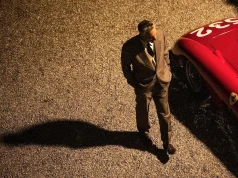
If I have seen further,” Sir Isaac Newton wrote to his peer, Robert Hooke, “it is by standing on the shoulders of giants.”
The line is well-known, but it isn’t Newton’s. Like many before and after him, Newton drew on another, and in this case, he lifted one of history’s signature metaphors from a 12th-century philosopher, Bernard of Chartes.
Newton wasn’t the first to receive credit for something he nicked, and he certainly won’t be the last. All works of science and art are built on another. You don’t necessarily need to know the foundation to enjoy the view, but for those with inquiring minds, discovering the building blocks is half the fun.
Which is why the Sie Film Center’s latest specialty program, Star Wars: Origins of the Force, is a welcome bit of cinema scholasticism in the midst of Star Wars VII: The Force Awakens’ ascent to the top of the world box office.
Co-presented by Alexandre O. Philippe — the director of documentary The People vs. George Lucas (2010) — Origins of the Force aims to discover the artistic influences behind George Lucas’s monolithic film franchise. It explores Lucas’s appropriation of 1930s serials Buck Rodgers and Flash Gordon to the classic 1927 German silent film Metropolis. Even Lucas’s first attempt at sci-fi, THX-1138, plays a critical part in the making of the 1977 blockbuster: Star Wars IV: A Hew Hope (hereafter noted simply as Star Wars).
While all three of these nestle nicely into the context of Star Wars, the highlight of the four-week series is also the movie that it relates to the closest: Akira Kurosawa’s The Hidden Fortress.
Released in 1958, The Hidden Fortress was produced during Kurosawa’s string of financial successes and artistic triumphs that began with Rashômon in 1950 and concluded with Red Beard in 1965. Over the course of that 15-year, 13-movie run, Kurosawa released a series of monumental works, one right after the other, which not only developed and deepened the director’s style, but also established a paradigm for future filmmakers to come, in particular Lucas.
That connection becomes immediately clear with Hidden Fortress’ opening shot of two bickering peasants, Tahei (Minoru Chiaki) and Matashichi (Kamatari Fujiwara), lost in a vast wasteland. While this closely resembles R2-D2 and C-3PO stranded on the desert planet of Tatooine, Star Wars also echoes Fortress by using these lowly characters for comic relief and the framing device of the story. Through these characters, viewers discover the world and meet the players.
From there, Hidden Fortress progresses in a deceptively fairy-tale manner with Tahei and Matashichi helping transport Princess Yuki (Misa Uehara) — a badass princess if there ever was one — and a fortune of gold across enemy lines and back to her castle. To accomplish this, they enlist the help of a powerful samurai, General Rokurota (Toshirô Mifune in all his glory).
Watching The Hidden Fortress is the immense pleasure of watching a director refine his aesthetic during a period of unmatched creativity. Much like a gambler on a hot streak, Kurosawa continued to experiment and develop without setback, and Fortress was his first adventure into widescreen photography — Tohoscope to be precise. The result is astounding as each beautifully composed black-and-white image is kinetic, popping off the screen with giddy energy.
Like directors John Ford and D.W. Griffith before him, Kurosawa achieved this feat not simply through story, but through cinematic technology as well. Kurosawa preferred to work with telephoto lenses and multiple cameras for each take, allowing him to cut seamlessly between performers without drawing attention to the cut. The result is a pictorial triumph, one that creates dynamic tension and explosive storytelling simply through staging and performance.
It worked so well that Lucas wasn’t the only director to take his cues from Kurosawa. The Hidden Fortress’ stylistic template would lend itself to numerous modern action-adventure movies and the subsequent parodies. Shades of Kurosawa can be found in anything from Saving Private Ryan to A Bug’s Life.
For baby boomers, Star Wars was a watershed moment, both cinematically and culturally. For moviegoers, any Kurosawa movie is that watershed moment, and The Hidden Fortress is one of the best. Lucas may have learned from Kurosawa and borrowed heavily from Fortress, but he didn’t make a movie as good as it. He couldn’t. But we shouldn’t hold that against him. Only Kurosawa could have topped Kurosawa.
On the Bill: The Hidden Fortress. 7 p.m. Wednesday, Jan. 20, Sie Film Center, 2510 E Colfax Ave, Denver, 720-381-0813. Tickets start at $8 at denverfilm.org.














